Environmental Health Report: An Overview of Key Concepts and Events
VerifiedAdded on 2022/10/01
|11
|790
|19
Report
AI Summary
This report provides a comprehensive overview of environmental health. It begins with a definition of environmental health according to WHO, emphasizing its role in evaluating, controlling, and correcting psychosocial and biological factors. The report outlines five major environmental health disciplines: industrial and occupational hygiene, epidemiology, exposure science, medicine, and toxicology. It then lists several U.S. environmental health organizations, including the Agency for Toxic Substances and Disease Registry (ATSDR), the Centers for Disease Control and Prevention (CDC), the National Environmental Health Association (NEHA), the Department of Energy (DOE), and the Environmental Protection Agency (EPA). The report categorizes environmental health hazards into physical, biological, chemical, biomechanical/ergonomic, psychosocial, and safety hazards. It also highlights major environmental health events, such as the establishment of the National Environmental Policy Act, the Clean Air Act, the Noise Control Act, and the Nuclear Waste Policy Act. The report discusses environmental epidemiology, its role in identifying and quantifying risks, and its importance in informing risk assessments. Finally, it emphasizes the importance of environmental health in controlling exposures, maintaining safety, reducing pollution, discovering disease mechanisms, and addressing environmental inequalities and climate change impacts. The report concludes with a list of references.
1 out of 11

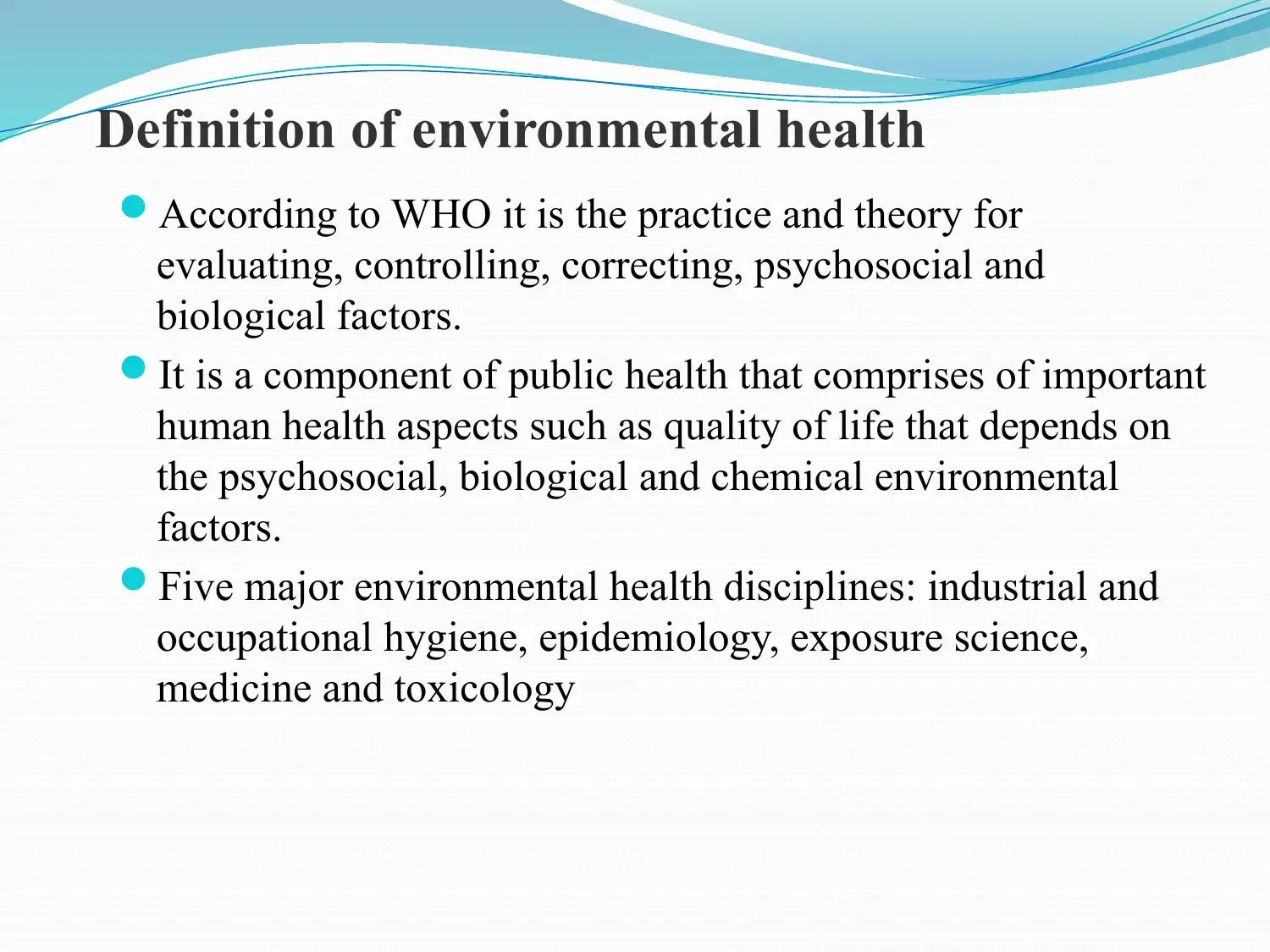
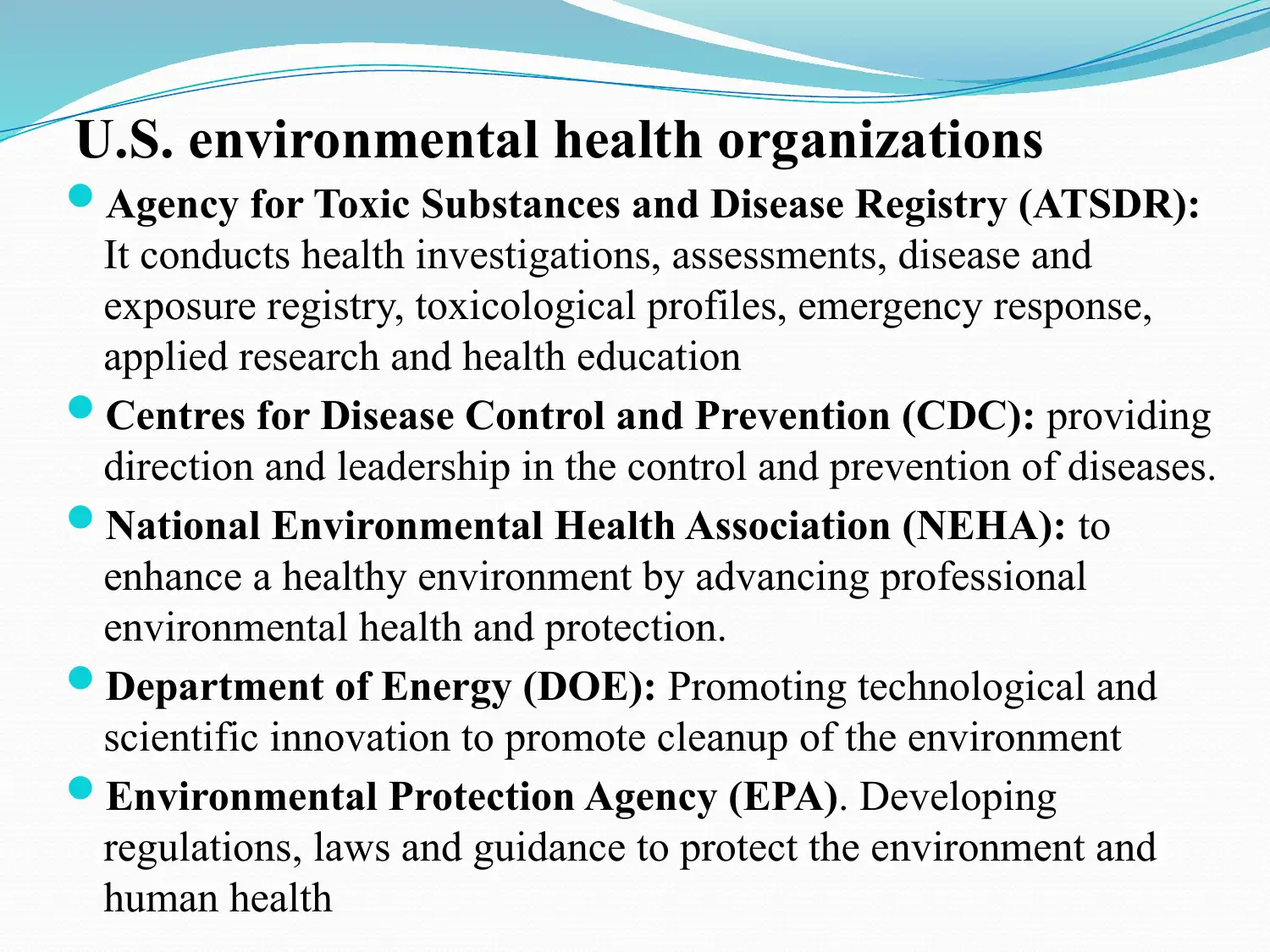

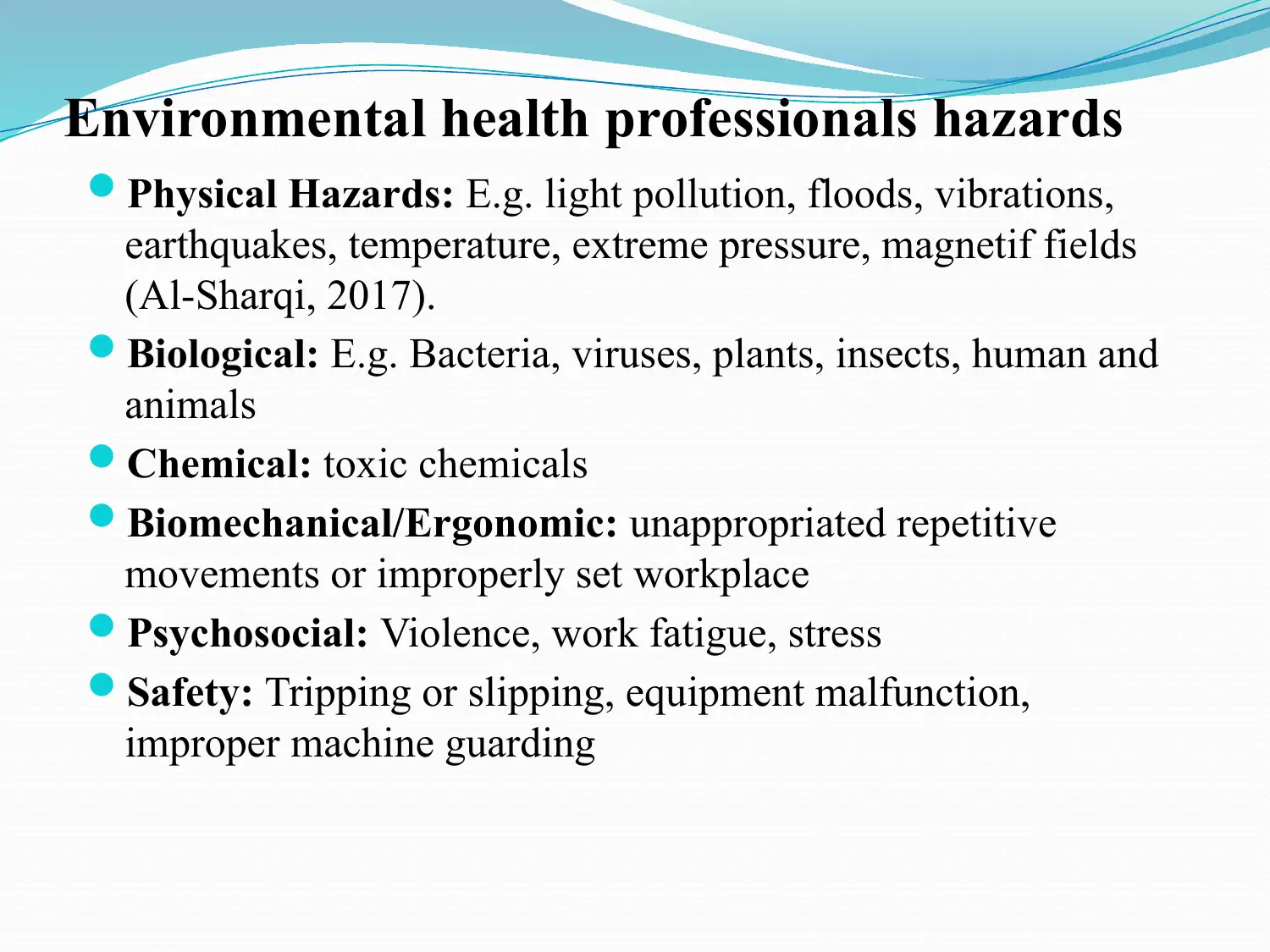
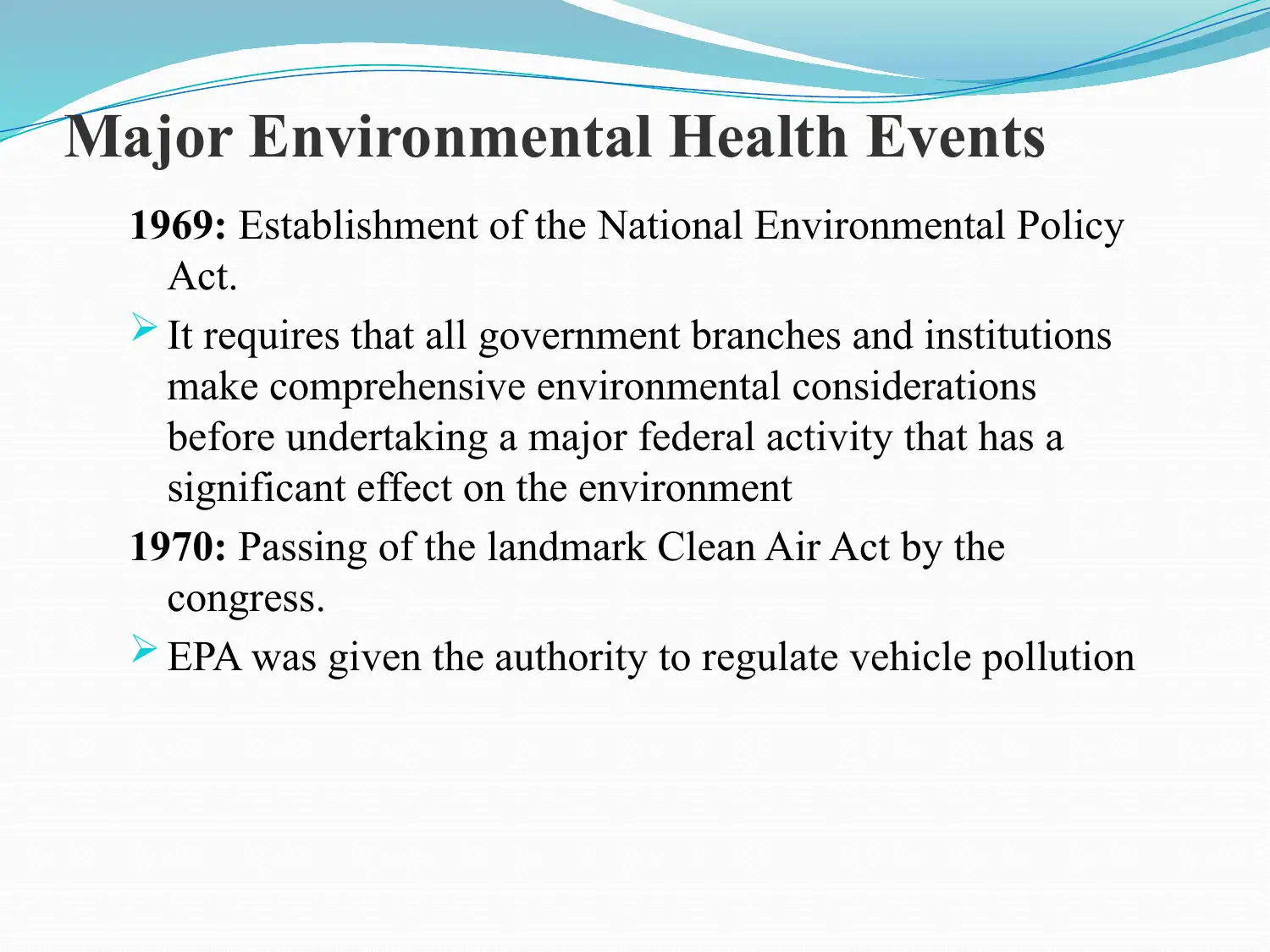

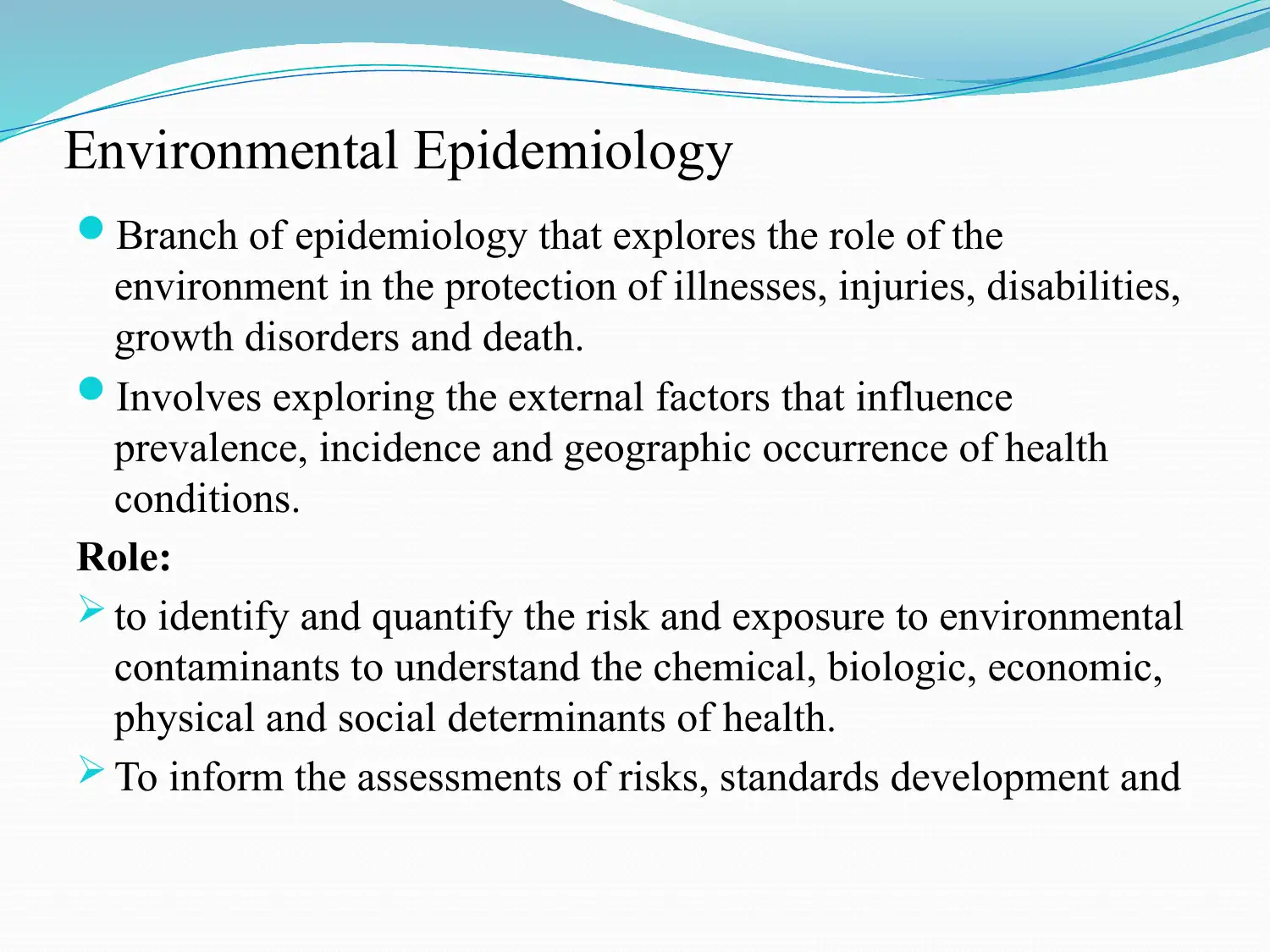
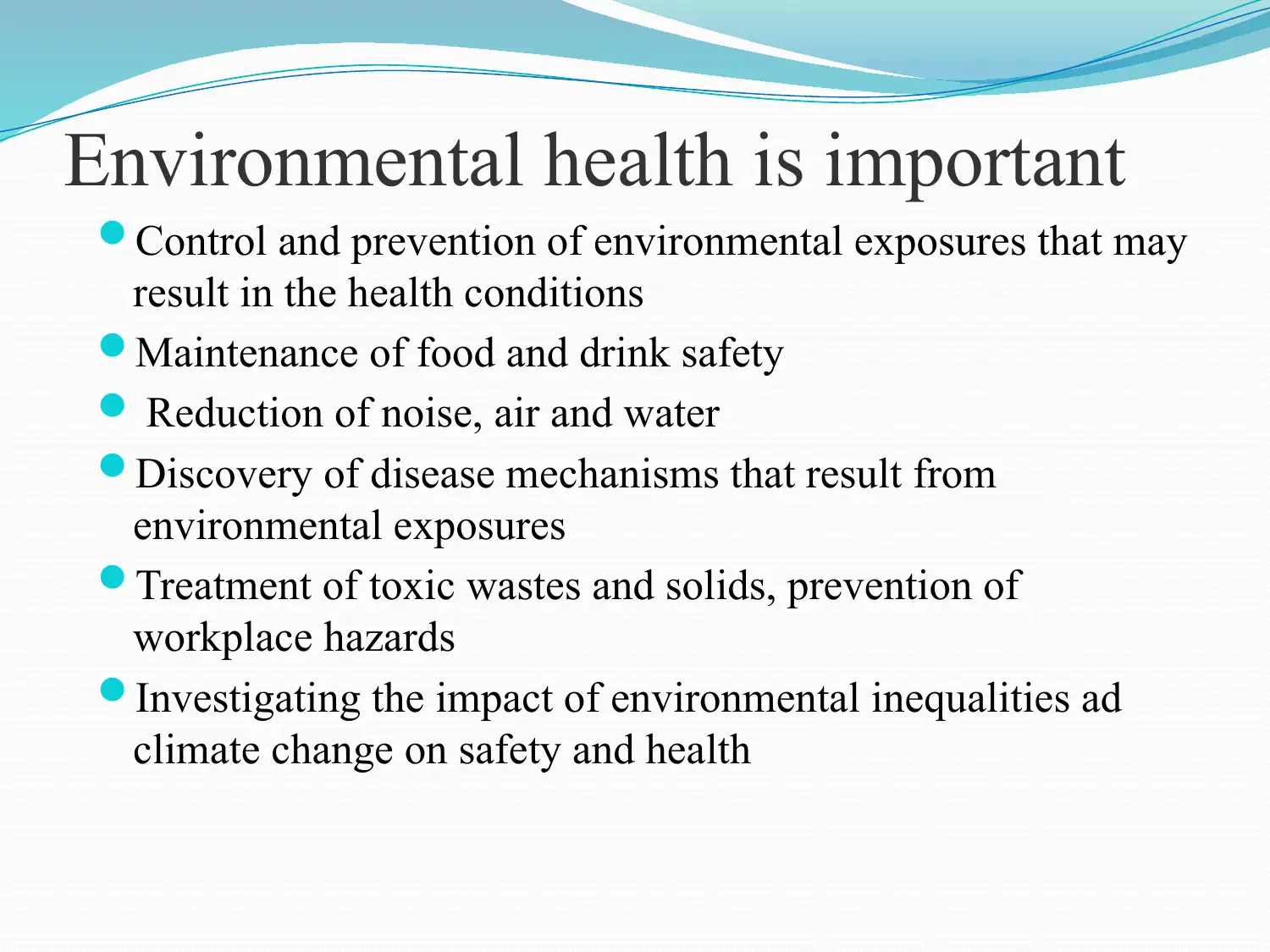
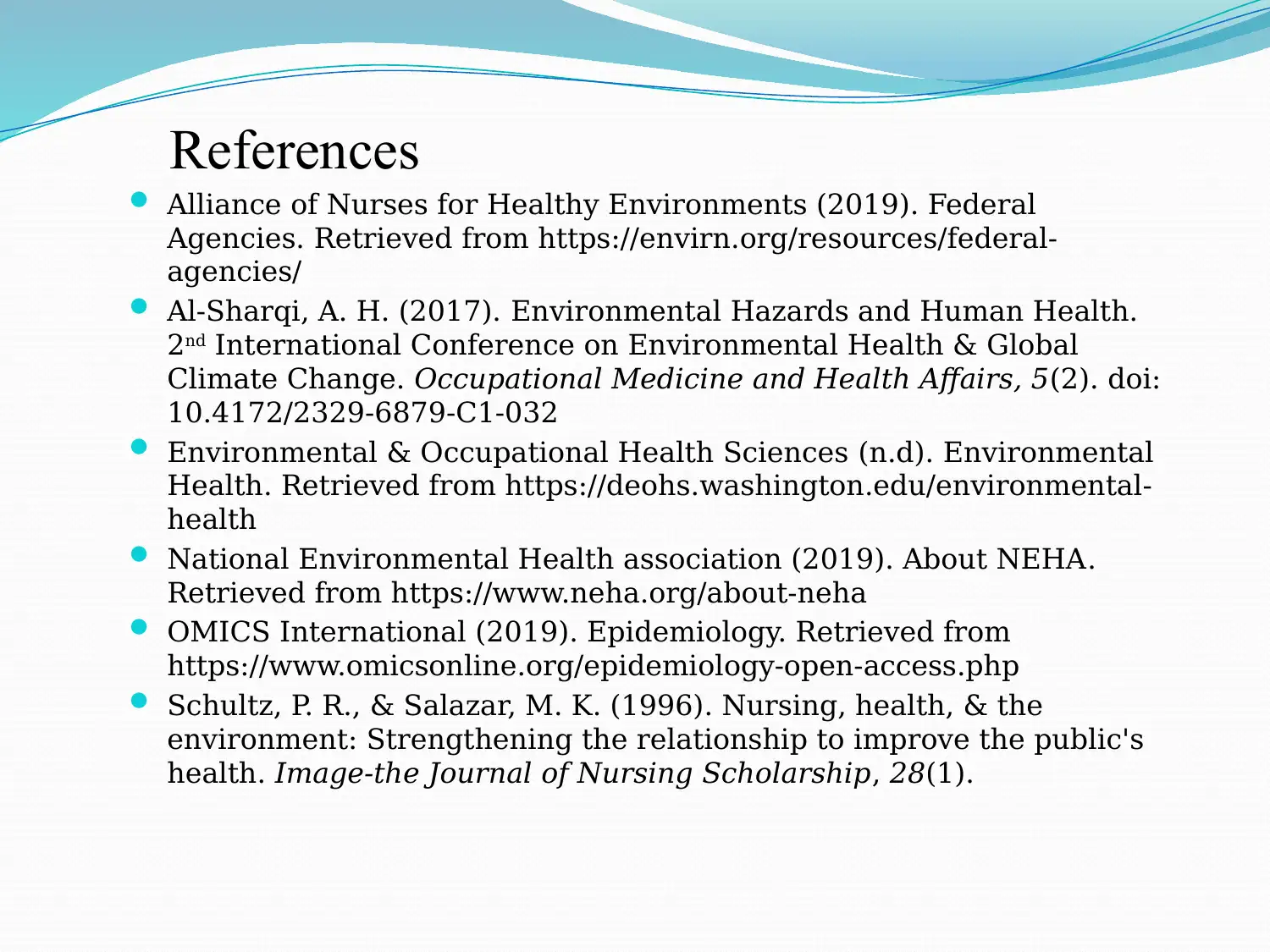
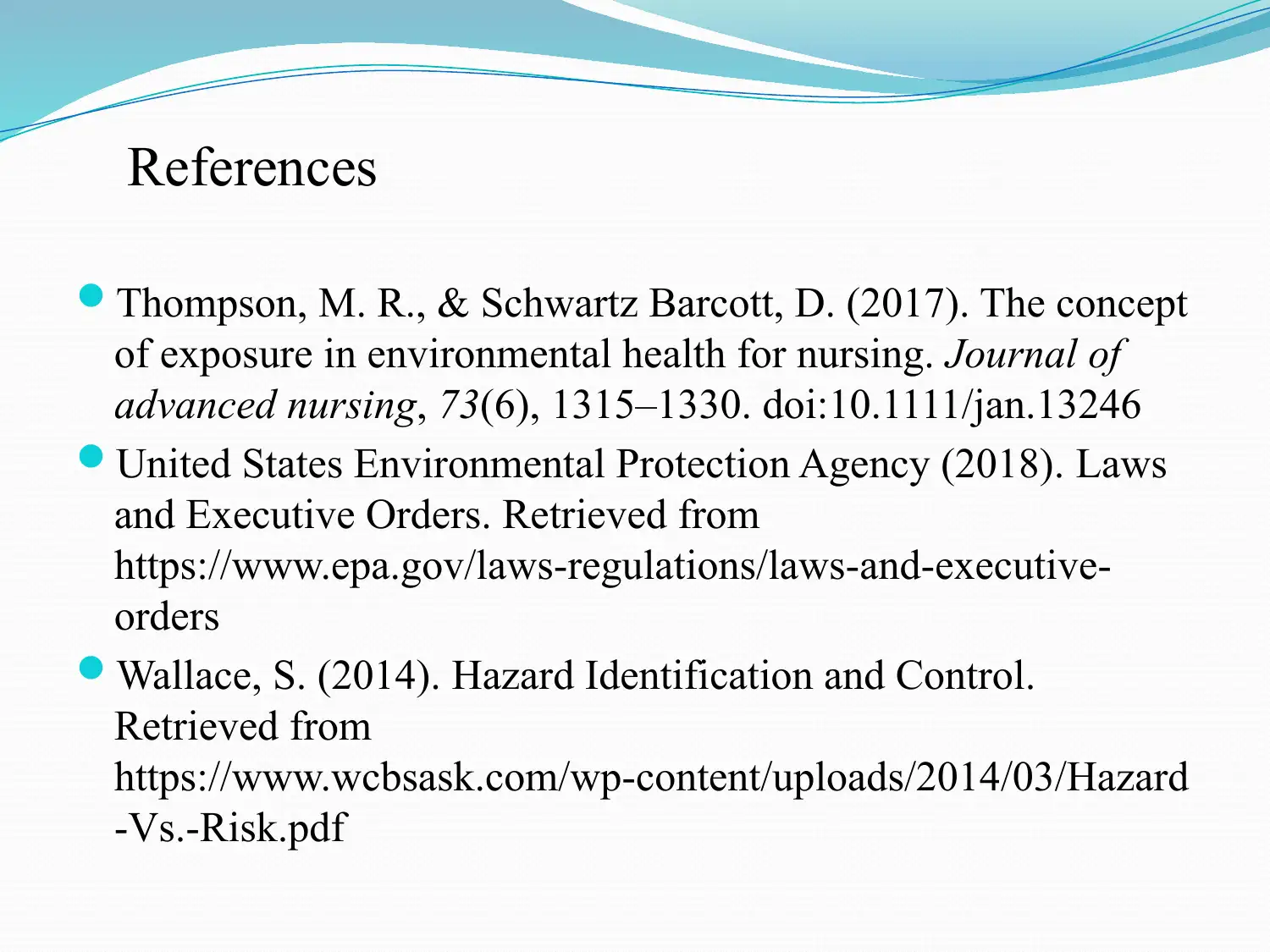







![[object Object]](/_next/static/media/star-bottom.7253800d.svg)